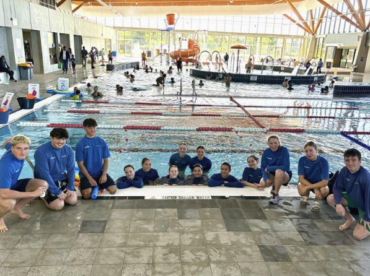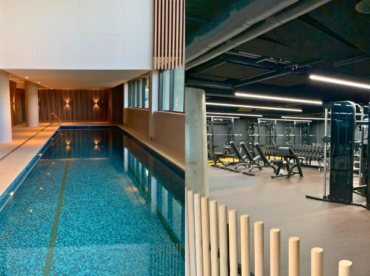Swimming is Australia’s iconic summer pastime, but whenever you mention kids and ocean in the same sentence, parental anxiety is bound to rise. And no wonder, since a beach comes with many of its own risks, such as rips, currents, dumping waves and even stingers.
A safer environment that can provide many hours of entertainment and exercise for the whole family is your local aquatic leisure centre. With trained lifeguards qualified in pool safety and aquatic rescue constantly on watch, there’s no safer place for your family to enjoy the water.
The inherent safety of swimming pools compared to other places in which Australians enjoy the water is starkly shown by drowning statistics. In the year 2017/18, of the 249 people who drowned in Australian waterways, only 13% did so in swimming pools. By contrast, the most dangerous place was one at which lifeguards are rarely present: rivers and creeks at 24.4%, closely followed by the beach with 18.4% and the ocean with 16%.
Most people don’t realise just how proactive lifeguards are, says Kara Monaghan, VIC/TAS Regional Manager of Belgravia Leisure.

Pictured above: Kara Monaghan
“Lifeguards supervise all people in and around the pool. This includes adult swimmers who may have a known water safety vulnerability such as a mobility condition, a pre-existing medical condition or someone who may not be familiar with aquatic environments,” she says.
They’re also constantly working behind the scenes to ensure pool safety. With other pool staff, they’re on the lookout for safety hazards, regularly inspecting pool equipment such as the diving boards, ropes and flotation devices, as well as monitoring the quality of the water and its chemical levels. They also spring into action to remove objects from the pool, including biohazards such as poop.
And of course, they’re trained in administering first aid and cardiopulmonary resuscitation (CPR) when needed.
“The standard of our lifeguards is second to none,” says Kara. “Our lifeguards participate in practical training every 12 weeks to ensure their skills are top notch.”
Highlighting this is a recent rescue for which Belgravia staff were given awards by Life Saving Victoria.
Ironically, the rescue took place at a pool lifeguard update course at Ascot Vale Leisure Centre on October 3. When an experienced lifeguard collapsed poolside and stopped breathing, Ascot Vale staff quickly began resuscitation efforts, using a defibrillator, as well as administering oxygen and CPR as paramedic and fire brigade emergency service personnel arrived.
The patient began to breathe again and was taken to hospital in a stable condition. The paramedics were full of praise for both the facility staff and course candidates on their resuscitation efforts and suggested they were responsible for the patient’s “long life prognosis”.
As a result of saving the man’s life, five staff from Belgravia Leisure’s Ascot Vale Aquatic Centre received a lifesaving award, including lifeguards Harrison Tanner and Andrew Antic, duty managers Jayk Burgess and Erith Nash, and exercise physiologist Luke Vesnaver.
But parents still need to do their part
Lifeguards work hard to ensure your safety at aquatic centres, but they want you to know they aren’t the full answer to your child’s safety at a pool. In fact, they battle with a persistent perception among many parents that they’re babysitters who are there to watch the children while the parents zone out or chat on the phone, only lifting their heads to glance occasionally at where their kids are in the water.
A 10-year analysis by the Royal Life Saving Society of drowning in public and commercial swimming pools showed that in two thirds of drowning cases, at least one lifeguard was present. So while lifeguards dramatically reduce the risk of someone drowning in a pool they’re supervising, vigilance by the parents is always needed.
This is why there are regular campaigns by lifesaving authorities around parental supervision. One is Watch Around Water, a public safety campaign in place at the majority of public pools in Victoria, including all Belgravia Leisure–managed pools.
It aims to educate the public about active supervision, such as making sure parents have a clear view of the child at all times, with no physical or structural barriers in the way.
“Watch Around Water is important because it introduces a partnership between parents and lifeguards for the safety of the children around water,” says Kara.
“It also becomes a conversation piece and helps our staff educate – particularly new- users about the safety risks inherent in swimming. Pools are a safe environment because we as an organisation, work really hard to make our pools safe, keep our staff trained to a really high standard and to promote swimming and water safety education, but it only takes 20 seconds for a child to drown, so having a tool to educate parents about the need for active supervision is really beneficial.
“Lifeguards can have up to 100 people they are supervising, whereas a parent or guardian has a maximum of four.”
Kara’s message for parents is: “Never take your eyes off your children around water. Trust the staff and obey lifeguard instructions. They’re not there to be the fun police, they’re there to keep you and your kids safe. Remember: Parents supervise. Lifeguards save lives.”




